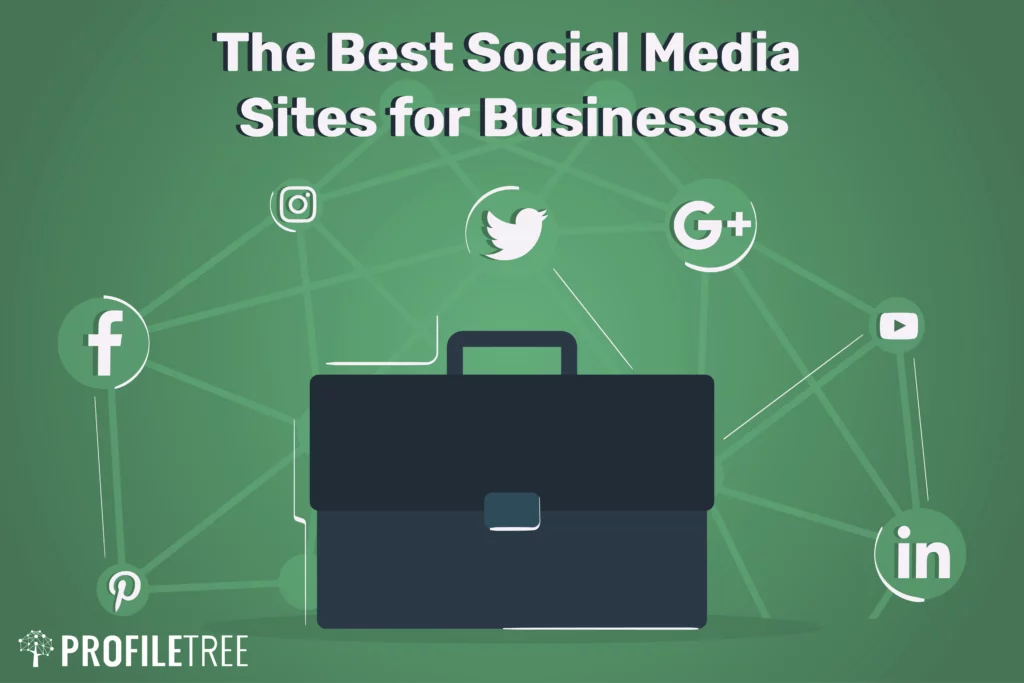Change in business can be hard to manage. But, when we are prepared and proactive, it can lead to great success. In our latest Business Leaders episode, we explore innovation and getting ahead of the curve with Lydia McClelland, Head of W5.
To learn more fascinating insights about this topic, check out our full Business Leaders interview with Lydia below, or read on for the highlights.
Table of Contents

Using Innovation to Keep Up With Change in Business
W5 is one of Northern Ireland’s top attractions, bringing science and technology to life for all ages through interactive experiences.
This, of course, requires constant innovation, meaning Lydia has to continually come up with fresh ideas to develop the business.
In our interview, Lydia explains that she has some exciting things in store for W5 – but how did she get into this role? Outlining her career path, she notes that she was always interested in helping businesses find success through different means.

“My background is in business development and marketing, I’ve just recently joined W5, but before that I held roles with the Ulster Orchestra, University of Ulster and Castlereagh Enterprises. So quite a mixed bag of background in terms of economic development, the arts and higher education sector.”
From joining W5, she has been briefed on a major task – maintaining W5’s dominance in the science and education sector.
“The key thing for W5, and why my role was created, was about creating sustainability for W5 in the longer run to make sure we’re here to safeguard the site of W5 as a science centre for the people of Northern Ireland. My focus is on the commercial development of W5 over the next number of years and on securing its future.”
Lydia gave an example of how innovative thinking had been used by W5 to keep introducing new ideas to create a unique visitor experience.
“This year, we piloted W5 Late, which is an adults-only event. We’re now running those three times a year. These events have been great for W5, and the audience who have come along have really enjoyed it.”
The event is positioned to appeal to the over 18 market. Using the hashtag ‘#NoKidsAllowed’, and with bar facilities on every floor – this reinvents the space as a casual yet invigorating space that taps into the familiarity we can all relate to having grown up in Northern Ireland
“We have found that it tends to be those who want to recapture their youth having grown up with W5.”
The evening is also changed to keep things exciting every time, and encourage repeat visitors.
“Not only is it just access to W5, we curate content for the night as well. So there’s a lot of added value content in terms of lecture theatre talks and exhibits. We bring in face painters and music to create a bit of atmosphere on the night as well.”

Business Development: The Key to Success
This immersive idea would never have been possible without the creativity that is involved in business development.
In her interview, Lydia explains how business development plays a major role in W5’s success.
“I think it’s really important to always be future-focused and do your horizon scanning. You need to keep your eyes open and see what’s happening out there – not only in terms of the local markets – but the national and international markets as well.”
In business development, it all revolves around finding gaps in markets – or hidden opportunities that may seem too obscure to explore.
“It is key to always look for the next opportunity and explore all opportunities. I always say ‘no idea is too crazy’ and encourage the team to bring ideas to the table and we can either rule them in or rule them out.
“Business development for us is key not only to the growth of W5, but to the whole site in terms of the SSE Arena and the Belfast Giants as well.”
During our Business Leaders interview with Lydia, we asked how the differences between marketing and business development can be defined.
“They are very different skill sets, the roles I have held to date have always been a hybrid of the two and I’m comfortable floating between business development and marketing. I have a mantra that a marketer is only as good as the product they are given to market.
“So in terms of the business development team coming up with the opportunities and new product ideas – the marketing team is only as good as those ideas.”
To hear more insights from Lydia, check out our full Business Leaders interview. To see what new things are happening at W5, visit the centre’s official website.
Diving Deeper into Types of Business Change Innovation
The world of business innovation is a thrilling yet complex landscape. To conquer its peaks, understanding the diverse pathways is crucial. Let’s explore the six distinct yet interconnected types of change innovation that can unlock your organization’s hidden potential:
1. Product/Service Innovation:
This is the rockstar of innovation, focused on crafting and delivering entirely new offerings that reshape markets and redefine customer experiences. Think Apple’s iPhone, Uber’s ride-sharing platform, or Netflix’s streaming service. This type of innovation requires bold imagination, cutting-edge technology, and a deep understanding of evolving customer needs.
2. Process Innovation:
Think of this as streamlining the engine of your business. It’s about optimizing and automating existing processes to boost efficiency, reduce costs, and improve quality. Implementing robotic process automation, automating workflows, or adopting agile development methodologies are examples of process innovation. Its focus is on internal performance improvements that translate into external benefits for customers and stakeholders.
3. Business Model Innovation:
This revolutionary shift rewrites the rules of how your business creates and delivers value. It’s about rethinking your core offering, revenue streams, customer relationships, and key partners. Airbnb revolutionized hospitality by connecting hosts and travelers directly, while Gillette’s subscription model changed the razor market. This type of innovation requires challenging established norms and embracing disruptive new approaches.
4. Management Innovation:
Leadership matters! This type of innovation focuses on revamping your organizational structure, decision-making processes, and leadership styles to foster agility, adaptability, and employee engagement. Implementing flat hierarchies, embracing remote work models, or empowering teams through self-management are examples. It’s about creating a culture that thrives on change and inspires innovative thinking across all levels.
5. Supply Chain Innovation:
Think of this as greasing the wheels of your business. It’s about optimizing your supply chain, from sourcing raw materials to delivering finished products, to boost efficiency, reduce waste, and increase transparency. Investing in digitalization, adopting sustainable practices, or building strategic partnerships are examples. This type of innovation ensures smooth operations, reduces costs, and improves responsiveness to market fluctuations.
Unveiling the Benefits of Business Change Innovation
In the bustling marketplace, business change innovation isn’t just a trendy buzzword; it’s the lifeblood of progress and prosperity. Embracing change and fostering a culture of innovation unleashes a cascade of benefits that propel your organization forward, leaving stagnant competitors in the dust. Let’s explore the five key advantages that await:
1. Achieve Competitive Differentiation:
In a sea of similar offerings, innovation sets you apart. Whether it’s through groundbreaking products, streamlined processes, or novel business models, you carve a unique niche and capture the attention of discerning customers. Think Tesla’s electric vehicles or Patagonia’s sustainable business practices – these innovations not only disrupt established markets but also attract loyal brand advocates.
2. Meet Evolving Customer Expectations:
Customers are fickle explorers, constantly seeking the latest and best. Innovation ensures you keep pace with their ever-changing desires. By anticipating their needs and proactively crafting solutions, you remain relevant and desirable, building strong customer relationships and securing your market share. Imagine a fitness app that seamlessly integrates wearables or a grocery delivery service offering hyper-personalized recommendations – these innovations anticipate and fulfill evolving customer expectations, solidifying their loyalty.
3. Improve Operational Efficiency:
Innovation isn’t just about flashy new products; it’s also about making your internal engine run smoother. Process automation, digitalization, and streamlined workflows empower your team to work smarter, not harder. Eliminate bottlenecks, reduce waste, and boost productivity, freeing up resources for further innovation and growth. Think automating invoice processing or implementing remote collaboration tools – these innovations optimize operations, reduce costs, and empower your team to excel.
4. Unlock New Revenue Streams:
Innovation opens doors to previously uncharted territories. By rethinking your business model, exploring new products or services, or forging strategic partnerships, you tap into fresh revenue streams. Consider Airbnb monetizing unused homes or Netflix branching into original content production – these innovations not only diversify income but also fuel sustainable growth and expansion.
5. Adapt to Technology Disruptions:
The tide of technology is relentless, and clinging to outdated methods is a recipe for disaster. Innovation empowers you to ride the wave, not be swept away. By embracing emerging technologies, fostering a culture of experimentation, and continuously adapting your offerings, you stay ahead of the curve and remain relevant in a rapidly evolving landscape. Think companies embracing AI or blockchain technology – these innovations not only future-proof your business but also open doors to entirely new possibilities.
Remember, the benefits of business change innovation are not one-dimensional; they synergistically intertwine, amplifying each other’s impact. Embracing change unlocks a virtuous cycle of competitive differentiation, enhanced customer satisfaction, optimized operations, diversified revenue streams, and unparalleled adaptability.
Navigating the Waves of Business Change Innovation
Embracing change and fostering innovation in your organization is a thrilling adventure, but one that requires a bold captain at the helm. So, how do you lead the charge and navigate the dynamic landscape of business change innovation? Let’s explore five crucial steps to ensure your organization rides the wave of success:
1. Securing Leadership Commitment:
Innovation isn’t a solo act; it thrives on unwavering support from the top. Leaders must be champions of change, not only endorsing it verbally but also actively participating in the process. Dedicate time and resources to strategic planning, encourage open communication, and personally lead by example. Remember, your enthusiasm becomes the wind that propels the sails of innovation forward.
2. Dedicating Resources and Budgets:
Innovation doesn’t flourish in barren soil. Allocate dedicated resources, both financial and human, to fuel your change initiatives. Invest in relevant technologies, training programs, and expert guidance. Create a dedicated innovation budget that fosters experimentation and protects promising ideas from resource constraints. Remember, investing in the future of your business is the smartest investment you can make.
3. Structuring Cross-Functional Teams:
Innovation thrives on diversity and collaboration. Break down the silo walls and bring together individuals from different departments, with varied skillsets and perspectives. Facilitate cross-functional teams that tackle challenges collectively, spark creative collisions, and nurture a culture of shared ownership. Remember, the whole is truly greater than the sum of its parts in the fertile ground of innovation.
4. Encouraging Creativity and New Ideas:
Innovation isn’t about following well-worn paths; it’s about venturing into uncharted territory. Cultivate a culture that embraces creative thinking, risk-taking, and out-of-the-box solutions. Encourage brainstorming sessions, reward experimentation, and provide safe spaces for employees to voice even the most unconventional ideas. Remember, fresh perspectives and audacious proposals often hold the key to groundbreaking breakthroughs.
5. Embracing Learning and Feedback:
Innovation is not a linear journey; it’s a constant learning loop. Celebrate successes, but also embrace failures as valuable learning opportunities. Encourage open feedback, actively gather data on your initiatives, and adapt your approach based on insights gained. Remember, continuous learning and adaptability are the fuel that keeps the engine of innovation roaring.
Leading business change innovation is not a task for the faint of heart. It requires courage, commitment, and an unwavering belief in the power of human ingenuity. By implementing these five crucial steps, you can create an environment where creativity thrives, new ideas blossom, and your organization stays ahead of the curve in the ever-evolving business landscape.
Conquering the Mountain: Navigating Barriers to Innovation
Embracing business change and fostering innovation is an exhilarating venture, but like any mountain climb, there are treacherous terrains to navigate. Fear not, intrepid explorer! Let’s explore three common barriers and equip you with tools to reach the summit of success:
1. Overcoming Risk-Averse Culture:
Change can be unsettling, and some organizations cling to the familiar even when it hinders progress. To overcome a risk-averse culture, employ these strategies:
- Champion incremental innovation: Start small, with low-risk initiatives that showcase the benefits of change without jeopardizing stability. Accumulate wins to build confidence and gradually push the boundaries of comfort.
- Highlight success stories: Share examples of companies that thrived through innovation. Showcase how calculated risks led to growth, increased profits, and market dominance.
- Focus on employee engagement: Involve employees in the innovation process. Empower them to propose ideas, voice concerns, and participate in risk assessment.
2. Managing Conflicts with Status Quo Processes:
Established routines can be entrenched, creating friction with novel approaches. To navigate these conflicts effectively:
- Map stakeholders and their concerns: Identify groups potentially impacted by changes and understand their anxieties. Address their concerns proactively and collaborate on finding solutions.
- Communicate transparently: Keep everyone informed about the rationale behind innovation initiatives and how they benefit the organization as a whole. Open communication fosters trust and reduces resistance.
- Offer training and support: Equip employees with the skills and knowledge necessary to adapt to new processes and technologies. Provide training and support throughout the transition period.
3. Demonstrating ROI for Innovations:
Sometimes, even great ideas get bogged down by the “numbers game.” Here’s how to demonstrate the ROI of your innovative initiatives:
- Define clear metrics: Identify measurable goals for your innovation projects, such as increased revenue, improved efficiency, or enhanced customer satisfaction. Track progress against these metrics to showcase the impact.
- Conduct pilot programs: Before full-scale implementation, test your innovations in smaller groups or controlled environments. This allows you to gather data, refine your approach, and build a compelling case for investment.
- Focus on long-term benefits: While short-term wins are valuable, emphasize the long-term potential of your innovations. Quantify the projected impact on growth, market share, and cost savings over time.
Remember, conquering the mountain of innovation requires not just audacious goals but also strategic planning, proactive conflict resolution, and a clear articulation of value. By employing these strategies, you can overcome resistance, manage anxieties, and build a compelling case for change that inspires buy-in and propels your organization towards a flourishing future.
Best Practices for Scaling Innovation in Your Business
In today’s fast-paced world, embracing innovation isn’t a luxury, it’s a necessity. But transforming your organization into a breeding ground for successful ideas requires more than just brainstorming sessions and inspirational quotes. Let’s explore five best practices that equip you to scale innovation and thrive in the ever-evolving marketplace:
1. Deep Dive into Market and User Research:
Innovation doesn’t happen in a vacuum. Before embarking on any new venture, delve deep into understanding your target market and users. Conduct surveys, interviews, and user testing to identify their needs, pain points, and unmet desires. This research serves as the compass guiding your innovation efforts, ensuring you’re focusing on solutions that resonate with real-world needs.
2. Embrace the Power of Digital Tools and Analytics:
Forget guesswork and gut feeling. Leverage the power of digital tools and analytics to inform your innovation process. Use social listening platforms to track trends and competitor strategies, employ A/B testing to refine your ideas, and utilize data visualization tools to gain actionable insights. These tools act as your map, revealing unseen pathways and potential pitfalls, guiding you towards data-driven innovation.
3. Implement the “Pilot and Iterate” Mantra:
Perfection takes time, and ambitious leaps can result in painful falls. Instead of aiming for home runs every time, adopt the “pilot and iterate” mantra. Start small with targeted pilot projects, testing your ideas in real-world settings and gathering critical feedback. Analyze the data, learn from your mistakes, and use those learnings to iterate and refine your concepts. Think of this as climbing a mountain – take calculated steps, adapt to the terrain, and you’ll reach the summit eventually.
4. Celebrate Both Triumphs and Stumbles:
Innovation is a journey, not a destination. There will be exhilarating wins and frustrating failures along the way. But remember, a culture that celebrates both successes and failures is crucial for sustainable innovation. Applaud and reward successful ventures, but also create a safe space for open discussion and learning from challenges. This fosters a spirit of experimentation and risk-taking, the lifeblood of continuous innovation.
5. Foster a Culture of Openness and Collaboration:
Innovation isn’t a solo act; it thrives on collaboration and the cross-pollination of ideas. Break down silos and encourage individuals from different departments, with diverse perspectives and skillsets, to come together. Create platforms for open communication, brainstorming sessions, and knowledge sharing. Remember, the sum of diverse minds is always greater than the parts, and within that collaborative space lie the seeds of revolutionary breakthroughs.
Scaling innovation requires more than just inspiration; it demands a well-equipped toolkit and a strategic approach. By incorporating these best practices, you can transform your organization into a vibrant hub of creativity, where data-driven decisions, iterative learning, and collaborative spirit propel you to the forefront of your industry. So, grab your tools, gather your team, and embark on your own journey of innovation, one that scales success and shapes a future brimming with possibilities.
Measuring the Success of Your Innovations
Embracing innovation isn’t just about throwing spaghetti at the wall; it’s about strategic experimentation and deliberate growth. But how do you know if your innovative efforts are truly paying off? Let’s explore three key ways to measure the impact of your innovations and ensure they’re propelling your organization forward:
1. Identifying Key Performance Indicators (KPIs):
KPIs act as your compass, guiding you towards meaningful metrics that capture the true impact of your innovation. Choose metrics that align with your specific goals and resonate with your organizational context. Consider these potential KPIs:
- Financial: Increased revenue, improved profitability, reduced costs, enhanced return on investment (ROI).
- Operational: Increased efficiency, improved processes, reduced lead times, enhanced customer satisfaction.
- Strategic: Market share growth, brand reputation improvement, competitive advantage, new business opportunities.
Remember, choosing the right KPIs is crucial; avoid vanity metrics that paint a distorted picture. Select measurable, actionable metrics that provide clear insights into the effectiveness of your innovation initiatives.
2. Monitoring Customer Adoption Rates:
Customers are ultimately the arbiters of your innovation’s success. Track their adoption rates to assess how readily they embrace your new ideas, products, or services. Monitor metrics like:
- Number of active users: For new features or platforms, track the sign-up and active user base growth.
- Product usage data: Analyze how customers interact with your innovations, identifying features they prioritize and potential areas for improvement.
- Customer satisfaction surveys: Gather direct feedback from users to understand their perception of your innovation and identify areas for improvement.
Customer adoption rates offer valuable insights into the real-world value and appeal of your innovations. By closely monitoring these metrics, you can adapt your approach to ensure your innovations resonate with your target audience and deliver impactful results.
3. Benchmarking Against Previous Baselines:
Innovation shouldn’t exist in a vacuum. To gauge true progress, compare your performance against established benchmarks. Consider these comparison points:
- Internal baselines: Track your innovation’s impact against pre-implementation metrics, measuring improvements in efficiency, customer satisfaction, or other relevant KPIs.
- Industry benchmarks: Compare your performance against industry averages or competitor data to see where you stand and identify areas for potential improvement.
- Historical trends: Analyze your own track record with innovation. Have past initiatives successfully met their goals? What lessons can you apply to your current endeavors?
Benchmarking provides valuable context and perspective, helping you assess the true impact of your innovations and identify areas for further optimization. Remember, continuous improvement is the hallmark of successful innovation, and data-driven insights gained through benchmarking are your map to achieving ever-higher levels of success.
By effectively measuring the impact of your innovations, you can translate creative ideas into tangible results, demonstrate the value of your efforts to stakeholders, and continuously refine your approach to ensure ongoing success. So, grab your measuring tape, track those KPIs, and embark on a journey of innovation that yields not just audacious ideas, but also measurable progress and sustained growth for your organization.
Business Change Innovation: FAQ:
Q: What are the biggest challenges to implementing business change innovation?
A: Overcoming risk-aversion cultures, managing conflicts with existing processes, and demonstrating the ROI of new initiatives are common challenges. This guide provides strategies to effectively address these roadblocks.
Q: How can I convince my employees to embrace change?
A: Open communication, transparent decision-making, and clear articulation of the benefits of change are crucial. Involve employees in the process, encourage their ideas, and create a safe space for open feedback.
Q: What resources are available to help me navigate business change innovation?
A: This guide is a fantastic starting point! Numerous industry associations, online resources, and expert consultants can also provide valuable insights and support.
Q: How can I measure the success of my innovation initiatives?
A: Identify key performance indicators (KPIs) aligned with your specific goals, track customer adoption rates, and benchmark your progress against established baselines. This guide dives deeper into effective measurement techniques.
Business Change Innovation: Conclusion:
The world of business change innovation is your oyster. By understanding the diverse pathways, embracing the benefits, and equipping yourself with the right tools and strategies, you can unlock unparalleled opportunities for growth, success, and transformation.
Remember, it’s not just about embracing change; it’s about shaping the future. So, step into the role of a trailblazer, ignite the spark of innovation in your organization, and embark on a journey that leaves your competitors in the dust. The future belongs to those who dare to create it, and this guide is your compass on that exhilarating path.
Become a Part of Our Business Leaders Series
Interested in featuring on our Business Leaders series? In our acclaimed series, we share amazing advice, tips and stories from business owners, managers and senior leaders. More articles to check out from our business blog:
Digital Agencies: An Ultimate Guide to Digital Agencies
Understanding Business Strategy in the 21st Century
Social Media Guide: COMPLETE One-Stop Essentials
From growing your business to looking after your staff, new industry insights and innovative ideas – we cover everything to inspire professionals across all sectors. If you want to become a part of it, simply drop us a message.


